on July 15th, 2016 | Customs & Traditions, Interesting
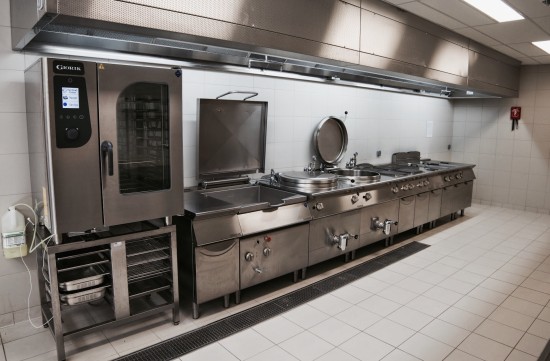 If you ever wondered what it takes to transform a non-kosher catering kitchen into a kosher one, then you may be interested in what rabbi Indich wrote on OU Kosher.
If you ever wondered what it takes to transform a non-kosher catering kitchen into a kosher one, then you may be interested in what rabbi Indich wrote on OU Kosher.
Plan on attending your cousin’s Bar Mitzvah party next week? Or your neighbor’s daughter’s wedding next month? As an increasing number of semachot are catered at non-kosher hotels, it is important for the kosher consumer to be aware of what takes place in hotel kitchens. Indeed, oftentimes guests enjoy a lavish smorgasbord (replete with roast rack of lamb and endive and radicchio salad) at a catered hotel affair but have little idea of what, from a kashrut perspective, goes on behind the scenes.
It is important to keep in mind that as a guest at a kosher affair you should never hesitate to question the mashgiach. It is your right to know the standards of the kashrut organization and to feel confident that the mashgiach is doing everything necessary to adhere to the highest kashrut standards.
To better understand the world of kosher catering, let’s take a look at a fictitious evening wedding held at the Sharriot Hotel in New York City.
6 AM: Two mashgichim enter the hotel kitchen to begin preparations. Depending on the size of the event, sometimes as many as three or four mashgichim are needed.
Read more here: OU Kosher
on December 18th, 2015 | Customs & Traditions, Ideas and Inspirations
There are many uniquely Jewish elements to a Jewish wedding, but the chuppah is the quintessential part of a Jewish wedding ceremony. Four poles and a tallis is all you need for a kosher chuppah, and many even prefer that simple old world flavor of this the very plain of chuppahs. However, happy was the moment when flowers met the chuppah canopy. Creativity knows no bounds when it comes to stylizing this symbolic house of the chassan and kallah.
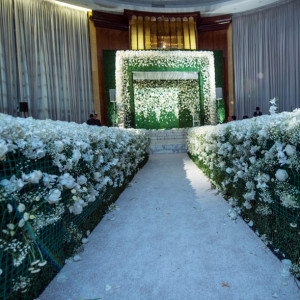
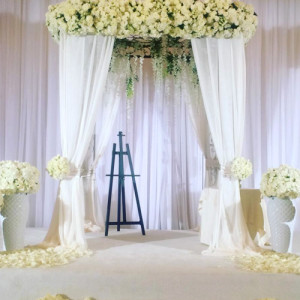
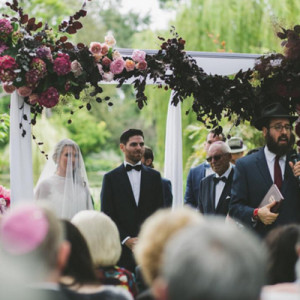
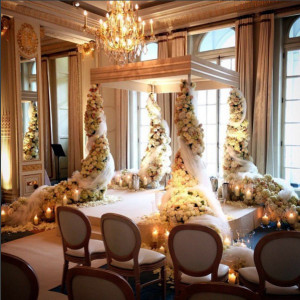
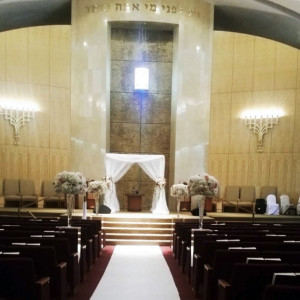
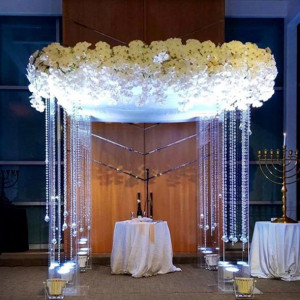
on July 14th, 2010 | Customs & Traditions, Interesting
Judaic decorative art has many forms and styles. Steeped in the often turbulent but for that rich and multifaceted history of the Jewish people and sometimes combined with a Jewish desire to be more modern than modern, today’s Judaic artworks express themselves with diversity of colors and shapes, of ideas and symbols. To a sensitive eye, Judaic art is a confluence of experiences through time (the long history of our nation) and space (the geographic dispersion throughout the four corners of the earth) expressed through the prism of uniquely personal vision and personal experience of the artist.
Ketubah, although essentially a legal document (and legal papers rarely find themselves a source for artistic inspiration), has been an important outlet for artistic expression for hundreds of years. Before we explore contemporary Ketubah artists, let me post here a few examples of Ketubahs of yesterday. There are a few Ketubah collections on the web; here are just a few excerpts from these that caught our attention:
These are from the New York Public Library collection:
(To see more from this collection of rare, antique ketubahs, click here: NYPL Digital Library)
![[Ketubbah. Isfahan, 1881]. Digital ID: 1238124. New York Public Library [Ketubbah. Isfahan, 1881]. Digital ID: 1238124. New York Public Library](http://images.nypl.org/index.php?id=1238124&t=r)
1881, Isfahan, Iran
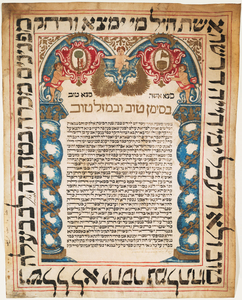
Reggio Emilia, 1770

Reggio Emilia, 1774

Nizza Monferrato, 1782
Another Digital collection can be found at the Jewish National and University Library; here are a few excerpts:
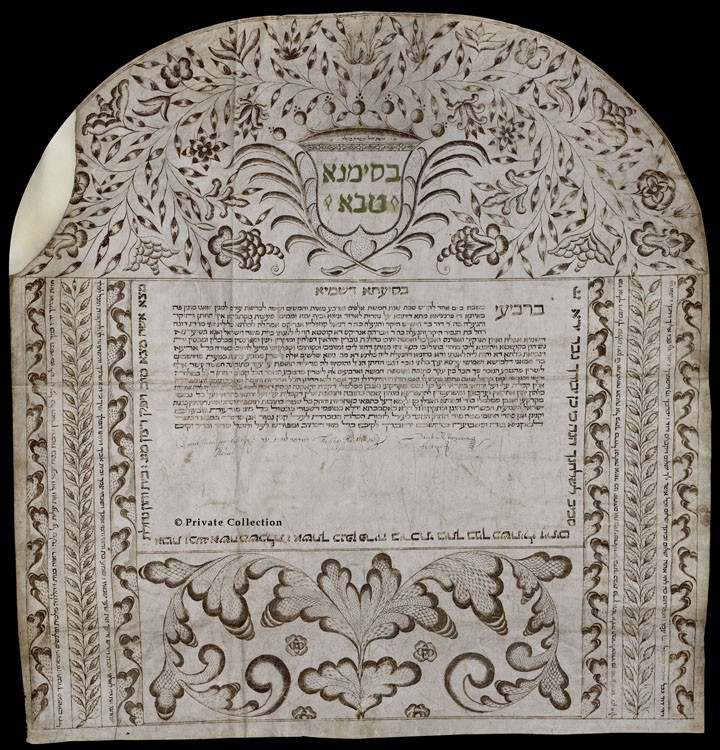
Bayonne, France, 1695

Salonika, Greece, 1883
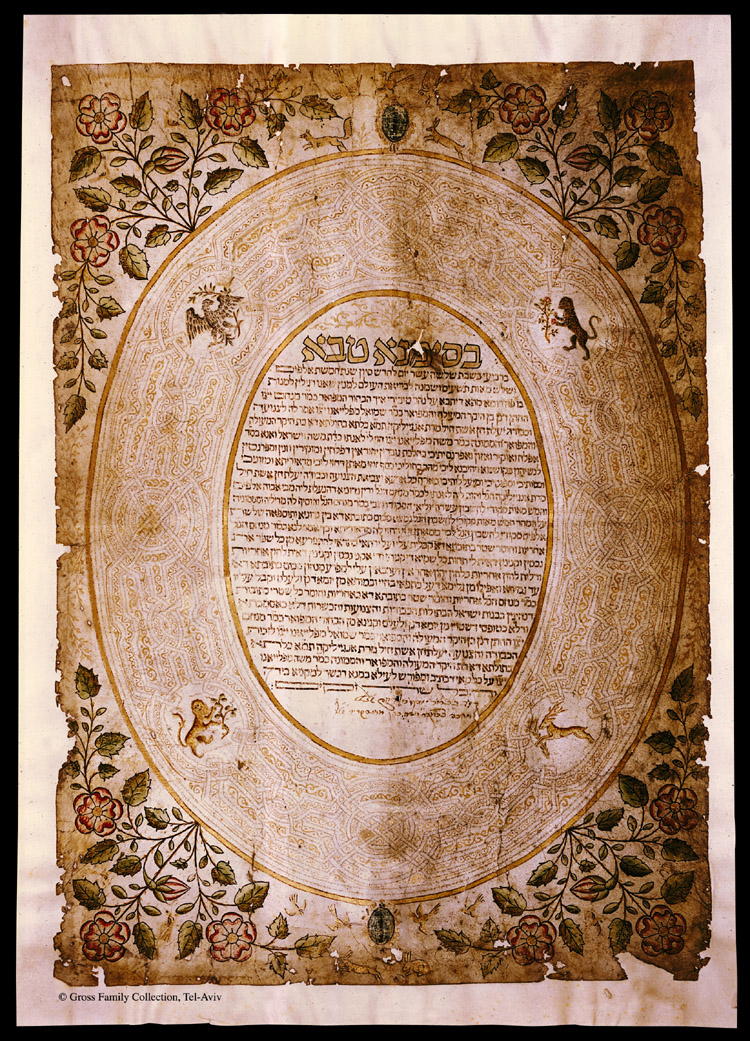
Rome, Italy, 1638
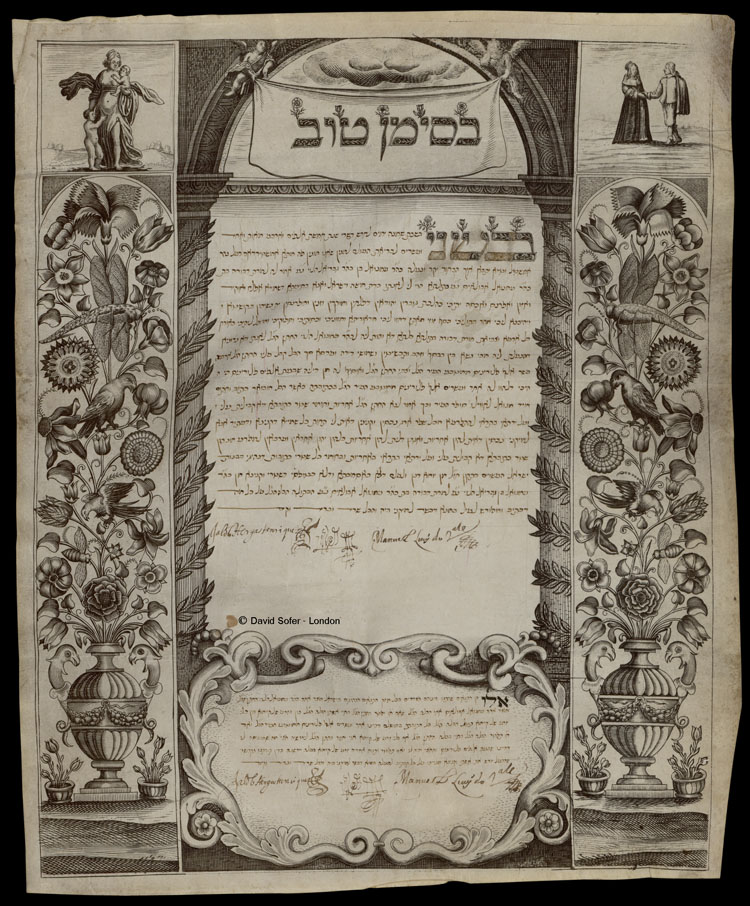
Amsterdam, Netherlands, 1661 (this printed ketubah appears in many weddings of the time.)
on June 17th, 2010 | Customs & Traditions
Since the Fast of 17th of Tammuz is in two weeks, we’re sharing with you an article regarding the halachah questions that arise when someone needs to hold their wedding on the eve of 17th of Tammuz.
Reposted from Revach.net:
The fast of Shiva Asar B’Tammuz (17th of Tammuz), which begins the mourning period known as the Three Weeks’, does not commence until the morning. Does that mean that the night before is not part of the Taanis and the halachos of the three weeks don’t start until the morning, or does the three weeks start as soon as it becomes night on 17 Tammuz but the actual not eating only begins in the morning?
Rav Moshe Feinstein in Igros Moshe (OC 1:168) says that it is a Machlokes Rishonim. Rav Moshe brings proof from the gemara that the taanis only starts in the morning but he says because of his proof we cannot pasken between the opinions of the rishonim. Nevertheless, says Rav Moshe, these issurim of shaving, weddings, and the halachos of the three weeks are not Din but rather Minhagim of Aveilus during a bad period for Am Yisroel, therefore we can be more lenient. Additionally he suggests that maybe even the Rishonim who hold the Taanis starts at night would agree that these things only become forbidden in the morning when the actual fasting begins.
Therefore Rav Moshe says that in a Makom Tzorech – circumstances that call for a wedding to be held on the eve of the 17th – it is permissible to treat the night of Shiva Asar B’Tammuz as if the three weeks have not started.
on December 13th, 2009 | Customs & Traditions
A Chanukah wedding may have a number of halachic implications for both the couple and the wedding attendees.
The Mitzvah To Light in Ones Home
The place where a person lights the Chanukah candles is just as important, even more important, than the time when he or she lights. The halacha requires that the Menorah is kindled in one’s place of residence. (Even though, the menorahs are lit in public places such as shuls, one does not fulfill his mitzvah of Chanukka candles with this lighting.) Temporary residence is also considered one’s residence for the purpose of lighting the candles; i.e. the place where a person sleeps that night is the place where he or she should light the menorah.
(more…)

← Older Entries
 If you ever wondered what it takes to transform a non-kosher catering kitchen into a kosher one, then you may be interested in what rabbi Indich wrote on OU Kosher.
If you ever wondered what it takes to transform a non-kosher catering kitchen into a kosher one, then you may be interested in what rabbi Indich wrote on OU Kosher.






![[Ketubbah. Isfahan, 1881]. Digital ID: 1238124. New York Public Library [Ketubbah. Isfahan, 1881]. Digital ID: 1238124. New York Public Library](http://images.nypl.org/index.php?id=1238124&t=r)






